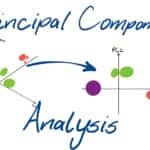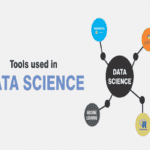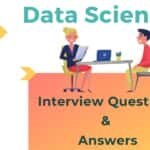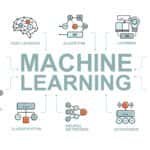This comprehensive blog outlines vital aspects of Data Analyst interviews, offering insights into technical, behavioural, and industry-specific questions. It covers essential topics such as SQL queries, data visualization, statistical analysis, machine learning concepts, and data manipulation techniques. Additionally, it delves into case study questions, advanced technical topics, and scenario-based queries, highlighting the skills and knowledge required for success in data analytics roles. The blog also presents popular data analytics courses, emphasizing their curriculum, learning methods, certification opportunities, and benefits to help aspiring Data Analysts choose the proper training for their career advancement.
Table of Contents
ToggleMastering Data Analyst Interviews: Top 50+ Q&A
Data Analysts are pivotal in deciphering complex datasets to drive informed business decisions. Their ability to translate raw data into actionable insights has made them indispensable assets in various industries.
Mastering interview preparation is paramount for those aspiring to carve a niche in this dynamic field. It showcases expertise and demonstrates a commitment to continuous learning and growth.
This article aims to guide you through the intricacies of Data Analyst interviews, offering valuable insights with a comprehensive list of top questions.
Additionally, we’ve got your back if you consider enrolling in the best data analytics courses. By the end of this article, you’ll explore data analytics certification courses that will significantly help you advance your career in the data domain.
Key Takeaways
- SQL Mastery: Understand SQL’s importance, join tables, and distinguish between SELECT and SELECT DISTINCT.
- Data Visualisation: Grasp principles and differentiate between bar charts and histograms based on data types.
- Statistical Analysis: Learn the Central Limit Theorem, correlation, and basic calculations like mean, median, and mode.
- Machine Learning: Differentiate supervised from unsupervised learning, understand overfitting, and know logistic regression.
- Soft Skills & Communication: Emphasize problem-solving, team collaboration, and clear communication with non-technical stakeholders.
Top 50+ Interview Questions for Data Analysts
Technical Questions
SQL Queries
-
What is SQL, and why is it necessary for data analysis?
SQL stands for Structured Query Language, essential for querying and manipulating data stored in relational databases.
-
Explain the difference between SQL’s SELECT and SELECT DISTINCT statements.
The SELECT statement retrieves data from a database, while SELECT DISTINCT eliminates duplicate rows from the result set.
-
How do you join tables in SQL?
Based on the table’s relationship, tables can be joined using various types such as INNER JOIN, LEFT JOIN, RIGHT JOIN, and FULL JOIN.
-
What is the difference between GROUP BY and ORDER BY in SQL?
GROUP BY groups rows with the same values into summary rows, while ORDER BY sorts the result set based on specified columns.
Data Visualisation
-
What are the fundamental principles of data visualisation?
Data visualisation principles include clarity, accuracy, efficiency, consistency, and aesthetics.
-
Explain the difference between a bar chart and a histogram.
A bar chart represents categorical data with rectangular bars. In contrast, a histogram represents the distribution of numerical data by dividing it into intervals and displaying the frequency of each interval with bars.
-
How do you choose the appropriate visualisation for different data types?
The choice of visualisation depends on the type of data and the insights you want to convey. For example, bar charts can compare categorical data and line charts to show trends over time.
Statistical Analysis
-
What is the Central Limit Theorem, and why is it important?
The Central Limit Theorem states that the sampling distribution of the sample mean approaches a normal distribution as the sample size increases, regardless of the shape of the population distribution. It’s important because it allows us to make inferences about a population based on a sample.
-
Explain the concept of correlation.
Correlation measures the strength and direction of the linear relationship between two variables. It ranges from -1 to +1, where -1 indicates a perfect negative correlation, +1 indicates a perfect positive correlation, and 0 indicates no correlation.
-
How do you calculate the mean, median, and mode?
The mean is the average of a set of numbers, calculated by summing and dividing by the number of values. The median is the middle value in a sorted list of numbers. The mode is the value that appears most frequently in a data set.
Machine Learning Concepts
-
What is machine learning, and how is it different from traditional programming?
Machine learning is a subset of artificial intelligence that enables computers to learn from data and improve over time without being explicitly programmed. In traditional programming, the programmer explicitly defines the rules and logic.
-
Explain the difference between supervised and unsupervised learning.
Supervised learning involves training a model on labelled data, where the correct output is provided. In contrast, unsupervised learning involves training on unlabeled data and finding patterns or relationships in the data.
-
What is overfitting, and how do you prevent it?
Overfitting occurs when a model learns the training data too well, including noise and irrelevant patterns, leading to poor performance on unseen data. Techniques such as cross-validation, regularisation, and feature selection can prevent overfitting.
Behavioural Questions
-
Tell me about a time when you had to meet a tight deadline for a project.
In my previous role, we had a project with a tight deadline. I prioritised tasks, delegated responsibilities, and communicated effectively with team members to ensure we met the deadline without compromising quality.
-
How do you handle conflicts within a team?
I believe in addressing conflicts openly and constructively. I listen to all perspectives, identify common goals, and work toward a solution that satisfies everyone involved.
-
Describe a challenging problem you encountered during a data analysis project and how you solved it.
During a data analysis project, I encountered a significant data discrepancy that threatened the accuracy of our analysis. I conducted thorough data validation, collaborated with stakeholders to identify the root cause, and implemented corrective measures to ensure data integrity.
Case Study Questions
-
Imagine you have a dataset of customer transactions. How would you segment customers based on their purchasing behaviour?
I would perform exploratory data analysis to understand the distribution of customer transactions and identify potential segments. Then, I would use clustering techniques such as k-means or hierarchical clustering to group customers based on similarities in their purchasing behaviour.
-
You’re tasked with predicting sales for a retail store. What approach would you take?
I would start by collecting historical sales data and other relevant variables such as promotional activities, seasonality, and economic factors. Then, I would explore forecasting models such as ARIMA, exponential smoothing, or machine learning algorithms like random forests or gradient boosting to predict future sales.
Advanced Technical Questions
Machine Learning Algorithms
-
What is logistic regression, and when is it used?
Logistic regression is a statistical method used for binary classification problems. It predicts the probability of a binary outcome based on one or more predictor variables.
-
Explain the concept of feature selection in machine learning.
Feature selection involves identifying and selecting the most relevant variables or features from a dataset to improve model performance and reduce overfitting.
-
What are the advantages and disadvantages of decision trees?
Advantages: It is easy to interpret and visualise, can handle numerical and categorical data, and requires fewer data preprocessing.
Disadvantages: It is prone to overfitting, unstable due to minor data variations, and unsuitable for capturing complex relationships.
Data Manipulation and Cleaning
-
How do you handle missing values in a dataset?
Missing values can be handled by imputation methods such as mean, median, or mode imputation, advanced techniques like k-nearest neighbours (KNN) imputation, or predictive modelling.
-
Explain the concept of outlier detection and how you identify outliers in a dataset.
Outlier detection involves identifying data points that deviate significantly from the rest of the data. Common methods for outlier detection include visualisation techniques like box plots and statistical methods like the Z-score or IQR (Interquartile Range) method.
Data Warehousing and ETL Processes
-
What is a data warehouse, and why is it important?
A data warehouse is a centralised repository that consolidates data from various sources for reporting and analysis. It is essential to provide a unified data view and enable business intelligence and analytics.
-
Explain the Extract, Transform, Load (ETL) process.
The ETL process involves extracting data from source systems, transforming it into a suitable format or structure, and loading it into a data warehouse or target system for analysis and reporting.
Case Study and Scenario-based Questions
-
You’re given a dataset with millions of rows. How would you approach analysing this large dataset?
I would first perform exploratory data analysis to understand the data distribution and identify potential patterns or insights. Then, I would use sampling techniques or employ big data processing tools like Apache Spark to analyse the large dataset efficiently.
-
How would you evaluate the performance of a predictive model?
Performance evaluation of a predictive model can be done using metrics such as accuracy, precision, recall, F1-score, and ROC curve for classification problems, and RMSE (Root Mean Square Error), MAE (Mean Absolute Error), or R-squared for regression problems.
-
Describe a situation where you had to use data to influence decision-making within an organisation.
In a previous role, I analysed customer feedback data to identify areas for improvement in product design. I presented the insights to the product development team, which led to modifications in the product features based on customer preferences.
Soft Skills and Communication Questions
-
How do you explain complex technical concepts to non-technical stakeholders?
I use simple and relatable analogies and visual aids like charts or graphs. I focus on the practical implications and benefits of the technical concepts to make them easily understandable for non-technical stakeholders.
-
Describe when you had to present your findings to a team or client.
I conducted a comprehensive data analysis project and presented the findings to the senior management team. I prepared a clear and concise presentation highlighting key insights and well-received recommendations that led to the implementation of actionable strategies.
Industry-specific Questions
-
What are the key trends in the data analytics industry?
Key trends in the data analytics industry include the increasing adoption of AI and machine learning, the growing importance of data privacy and security, and the rise of real-time analytics and edge computing.
-
How do you see the role of a data analyst evolving in the future?
The role of a data analyst is evolving to become more strategic and collaborative, focusing on leveraging advanced analytics, machine learning, and AI to drive business growth and innovation.
Problem-solving and Logical Reasoning Questions
-
How do you approach solving a complex data analysis problem?
I break down the problem into smaller manageable tasks, define clear objectives, gather relevant data, apply appropriate analytical techniques, and iteratively refine the solution based on feedback and insights.
-
Describe a situation where you had to think creatively to solve a data-related challenge.
I encountered a data quality issue where inconsistent data formats affected the analysis. I devised a data cleaning and transformation strategy using Python scripts to standardise the data, which resolved the issue and improved the accuracy of the analysis.
Cultural Fit and Team Dynamics Questions
-
How do you adapt to working in a fast-paced environment?
I thrive in fast-paced environments by effectively prioritising tasks, staying organized, maintaining open communication with team members, and being flexible and adaptable to changing priorities and requirements.
-
Describe when you contributed to a team project or initiative.
I collaborated with a cross-functional team on a data-driven project to improve customer segmentation. I contributed by providing data insights, developing predictive models, and presenting findings, ultimately leading to more targeted marketing strategies and increased customer engagement.
Data Governance and Ethics Questions
-
What is data governance, and why is it important?
Data governance refers to managing and overseeing data availability, usability, integrity, and security within an organisation. It’s essential for ensuring data quality, compliance with regulations, and enabling effective data-driven decision-making.
-
How do you ensure data privacy and security in your data analysis projects?
I adhere to data privacy regulations and best practices by protecting sensitive information with encryption, access controls, and anonymisation techniques. I also conduct regular audits and compliance checks to maintain data integrity and security.
Programming and Scripting Questions
-
Which programming languages are you proficient in for data analysis?
I am proficient in languages like Python, R, and SQL, commonly used for data manipulation, statistical analysis, and machine learning tasks.
-
How do you handle large datasets in Python?
To handle large datasets efficiently in Python, I use libraries like Pandas for data manipulation and cleaning and tools like Dask or Spark for distributed computing.
Industry-specific Tools and Technologies Questions
-
Are you familiar with any data visualisation tools?
Yes, I am proficient in data visualisation tools such as Tableau, Power BI, and Matplotlib in Python, which I use to create interactive and insightful visualisations for data analysis.
-
Have you worked with cloud-based data platforms like AWS, Google Cloud, or Azure?
I have experience working with cloud-based data platforms, such as AWS S3 for data storage, Google BigQuery for data querying, and Azure Machine Learning for deploying machine learning models.
Scenario-based Questions
-
Imagine you’re given a dataset with inconsistent data formats. How would you standardise the data?
I would use data cleaning techniques to identify and correct inconsistent data formats, such as using string manipulation functions or regular expressions to standardise date formats, remove special characters, or convert text to lowercase/uppercase as needed.
-
You’re tasked with identifying customer churn factors. What approach would you take?
I would perform exploratory data analysis to identify patterns and trends related to customer behaviour. Then, I would use predictive modelling techniques like logistic regression or decision trees to identify significant predictors of churn and develop strategies to address them.
Communication and Presentation Skills Questions
-
How do you ensure your data analysis findings are understandable to non-technical stakeholders?
I use clear and concise language and visual aids like charts and graphs. I focus on the data analysis’s practical implications and actionable insights to make it understandable for non-technical stakeholders.
-
Describe a time when you had to present complex data analysis findings to a non-technical audience.
I presented the results of a predictive modelling project to the executive leadership team. I prepared a simplified presentation with visualisations and critical takeaways, focusing on the business impact and strategic recommendations derived from the analysis.
Learning and Development Questions
-
How do you stay updated with the latest trends and developments in data analytics?
I regularly participate in online courses, webinars, and conferences related to data analytics. I follow industry blogs and publications, and engage with online communities to stay updated with the latest trends, tools, and best practices.
-
Are there any areas in data analytics where you want to improve or learn more?
I am keen on enhancing my skills in machine learning algorithms and deep learning techniques to tackle more complex data analysis projects and leverage advanced predictive modelling capabilities.
Cultural Fit and Team Collaboration Questions
-
How do you handle feedback or criticism regarding your work?
I view feedback as an opportunity for growth and improvement. I listen attentively, seek clarification when needed, and use constructive criticism to refine my skills and enhance the quality of my work.
-
Describe your ideal work environment and team dynamics.
My ideal work environment is collaborative and inclusive, where team members respect and support each other’s contributions, communicate openly, and work towards common goals with a shared sense of purpose and commitment.
Closing and Wrap-up Questions
-
Do you have any questions for us?
Yes, I’d like to know more about the company’s data infrastructure, the types of projects the data analytics team is currently working on, and how the role of a Data Analyst contributes to the company’s overall strategy and success.
-
What motivates you as a Data Analyst?
I am motivated by the opportunity to leverage data-driven insights to solve complex problems, drive innovation, and positively impact business performance and customer satisfaction.
-
What are your career goals in Data Analytics?
My career goals in data analytics are to continue developing my technical skills, gain experience leading complex projects and cross-functional teams, and contribute to strategic decision-making and business growth through data-driven insights and solutions.
-
How do you handle stress or tight deadlines?
I manage stress and tight deadlines by prioritising tasks, maintaining a positive mindset, seeking support from team members when needed, and focusing on solutions and continuous improvement to meet challenges effectively.
-
Can you provide an example of a successful data analysis project you’ve completed?
Certainly! I led a data analysis project to optimise inventory management for a retail client, which resulted in a 20% reduction in stockouts and a 15% increase in inventory turnover, leading to improved profitability and customer satisfaction.
-
How do you handle competing priorities or conflicting requirements in a project?
I handle competing priorities by clarifying expectations, setting priorities based on impact and urgency, collaborating with stakeholders to find mutually acceptable solutions, and adapting to changing requirements flexibly and resiliently.
-
What are your strengths and weaknesses as a Data Analyst?
My strengths as a Data Analyst include strong analytical skills, attention to detail, and the ability to translate complex data into actionable insights. As for weaknesses, I am continuously improving my programming skills and staying updated with the latest tools and technologies in data analytics.
-
How do you approach learning new technologies or tools?
I approach learning new technologies by setting clear learning objectives, seeking quality resources and tutorials, practising hands-on exercises, and applying new knowledge to real-world projects to reinforce my understanding and proficiency.
-
Describe a situation where you had to collaborate with a team member with a different working style or perspective.
I collaborated with a team member from a different department on a cross-functional project. We initially had different approaches to problem-solving, but we leveraged our diverse perspectives to find innovative solutions and deliver successful outcomes for the project.
-
What essential qualities do you believe a successful Data Analyst should possess?
A successful data analyst should possess strong analytical and problem-solving skills, attention to detail, effective communication and presentation skills, adaptability to new technologies and methodologies, and a passion for continuous learning and improvement in data analytics.
Best Data Analytics Courses
Choosing the right data analytics course is essential for acquiring the necessary skills and knowledge to excel in this dynamic field. Some popular data analytics courses offer comprehensive training, flexible learning options, and valuable certifications.
Data Analytics Course by IIM Skills
Flexible Learning
- Online courses offer flexibility with weekend or weekday sessions.
- Learn without compromising on professional or personal commitments.
Expert Mentors
- Subject matter experts provide in-depth insights and guidance.
Practical Approach
- Hands-on, skill-oriented learning.
- Real-world application of theoretical concepts.
Certification & Internship
- Master certification upon completion.
- Assured a two-month internship for professional exposure.
Additional Benefits
- Free demo sessions.
- 24/7 support and career guidance.
- Lifetime access to updated learning materials.
- 10% group discount available.
Business Analytics 360 by AnalytixLabs
Comprehensive Curriculum
- It covers tools like data visualization, data science with R and Python, Tableau, SQL, predictive modelling, and more.
Skill Development
- Mastery in MIS Reporting Analytics, Statistical Analytics and Modeling, Predictive Modeling, and Data Blending.
Flexible Learning Options
- Self-paced e-learning, classroom & boot camp, and interactive online classes.
Practical Application
- Assignments and projects included in the course.
Certification
- Certification by AnalytixLabs upon completion.
Data Analytics Certification Course by Pickl.AI
Objective
- Learn to collect and interpret data effectively.
- Unlock operational efficiency and gain customer insights.
Expert-Led Learning
- Learn from practicing Data Scientists.
Comprehensive Modules
- Detailed learning modules covering essential topics.
Support & Assistance
- Complete support and assistance throughout the course.
Data Analyst Master Program by Simplilearn
Comprehensive Learning
- Master descriptive and inferential statistics, hypothesis testing, regression analysis, and more.
Tools & Technologies
- Gain proficiency in Python, pandas, NumPy, Scipy, Power BI, R, and Tableau.
Certification & Benefits
- Industry-recognized certification upon completion.
- Access to IBM Cloud Lite account.
- Job assist feature for job readiness.
Duration
- 120+ hours of intensive training.
Advanced Certification in Data Analytics-IIT Kanpur by Edvancer
Expert-Led Training
- Delivered by experts from IIT Kanpur and industry professionals.
Flexible Learning
- All-time access to online course content post-completion.
Practical Content
- Focus on practical applications and real-world scenarios.
Placement Assistance
- 100% placement assistance and career guidance provided.
Duration
- 180 hours of comprehensive training.
When selecting a data analytics course, consider the curriculum, instructor expertise, course duration, flexibility, and cost to ensure it meets your learning objectives and career goals.
Frequently Asked Questions
When choosing a data analytics certification course, consider the curriculum, instructor expertise, course duration, flexibility, and cost to ensure it aligns with your learning objectives and career goals.
Enrolling in the best data analytics courses offers comprehensive training, hands-on learning, valuable certifications, and practical skills essential for excelling in the dynamic field of data analytics.
To find the best data analytics courses, research online reviews, compare course curriculums, check instructor qualifications, and consider factors like flexibility, certification, and additional support to ensure they meet your needs.












